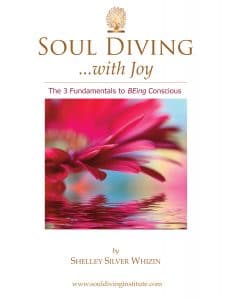BY SHELLEY WHIZIN
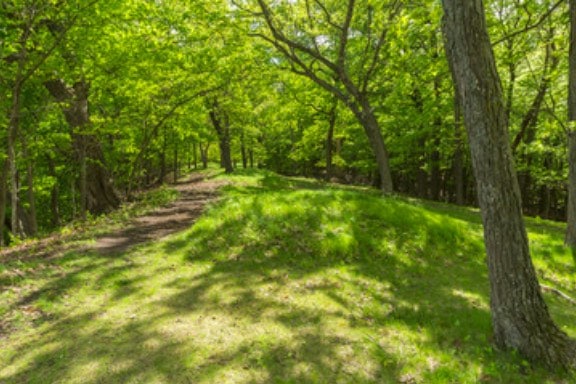
“All the body wants to do biologically is decompose.Once you die, it’s ‘Let me out here!I’m ready to shoot my atoms back into the universe!'”
-Caitlin Doughty, Founder of The Order of the Good Death
Humans have been burying one other in a variety of ways for thousands of years through various acts, rituals and signs of respect. Burials offer a sense of closure for family members and friends, as well as the community at large. In many cultures, burying the dead is a necessary step for the deceased to enter the afterlife or to give back to the cycle of life.
We all know that we are going to die one day. That is a given. How we die or when we die is still a mystery. Thinking about what you want to do with your body after you die is a whole other decision. Some people really don’t care because they’re going to be dead. Others, however, do think about what options exist. Do you want to be buried in a traditional cemetery, in nature, or among the trees? Do you want to be cremated, or resomated, and if so, how do you want your ashes to be handled?
Maybe you think you’re too young to think about such things. And it’s probably not the topic you want to talk about, no matter how old you are. Or maybe no one has ever asked you. Being conscious about what happens to your life, death and beyond is a wholistic approach that honors what you want. It helps you create that sense of completion that reflects your particular desires. And the funny thing is, starting from the end can bring you a sense of well-being now.
In this article, we are going to focus on green and natural burials. We will explore:
- some alternative ways of how you could honor your body after you die,
- the effect green and natural burials have on our environment,
- whether green and natural burials are a trend or are here to stay,
- some of the ramifications of traditional burials you may not be aware of,
- and burial options available to determine if green and natural burials are right for you,
- along with some green burial products.
We will talk about all these so that you can decide for yourself what resonates and what you want to do with your body. After all, it is YOUR body and what you do with it now and forever is up to you!
What is the Difference Between a Green and Natural Burial?
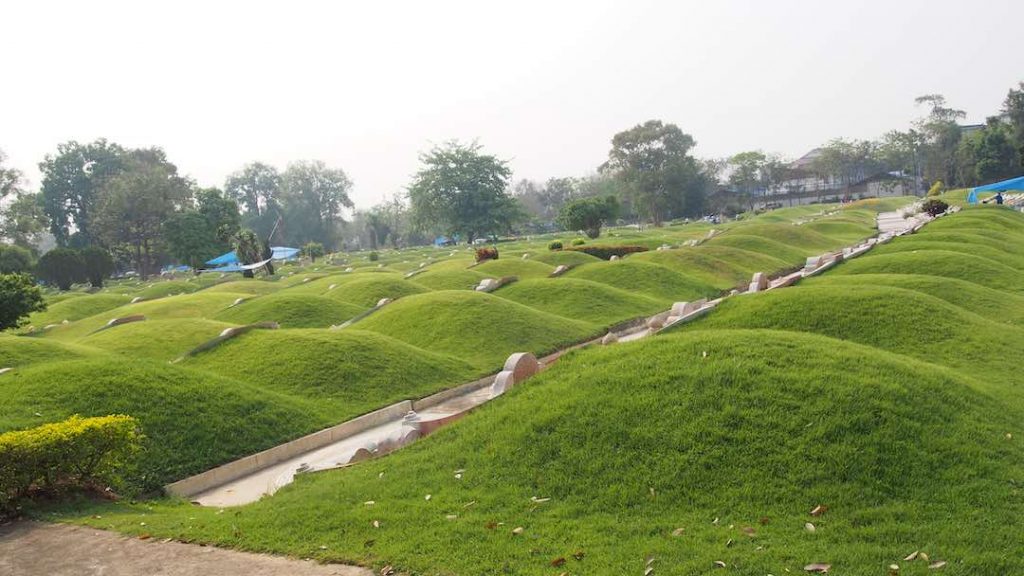
The terms green burial and natural burial are often used interchangeably. Even though they are similar, they are actually two different types of burial options. In a simplified definition, “natural burial” strictly refers to the actual burial process. This pertains to the opening and closing of the grave, preparation of the remains, and laying of those remains in the burial plot. “Green burial” refers to this process as well, but also to the cemetery in which the burial takes place. A “green cemetery” uses no artificial pesticides. None of the bodies buried in a green cemetery can be embalmed or buried in a traditional casket or concrete vault. A natural burial can also occur within a traditional cemetery that’s licensed. But a green burial requires a special certified cemetery. This is for the sake of conservation of natural resources, preserving the environment and the protection of the health industry workers.
Many people view green burials as the customary way of being buried.
That’s because it’s a return to the way people were buried long before the industrialization and commercialization of funerals. It supports a variety of religious traditions and meets the requirements of their religious law, as reflected in Jewish funeral traditions or Muslim funeral traditions. Jewish law prescribes that a casket be made from wood, commonly out of pine, without any metal. In this way, both the casket and the body are entirely biodegradable. Some Jewish caskets even have holes drilled into the bottom to accelerate the rate at which the body will decompose. Thus, it fulfills the principle stated in the Book of Genesis, “for dust you are and to dust you shall return.”
Burying a Loved One Without Embalming
Green burials are a way of burying a loved one without embalming, in a natural setting, wrapped in a shroud and/or casket that uses biodegradable, nontoxic and sustainable materials with the least impact on the environment. Green burials and natural burials emphasize simplicity and environmental sustainability, taking into consideration conservation of natural resources. Both are non-traditional forms of interment for a number of different reasons. They are eco-friendlier and offer burial options you may not have considered.
Because a natural burial does not use embalming fluid, or a burial vault, the body is simply wrapped in a shroud and either placed in a biodegradable coffin or placed directly into the earth. This allows the body to decompose naturally, returning to the soil. This truly emulates, “ashes to ashes, dust to dust,” a phrase we have often used when we bury our dead. The process has minimum impact on the environment. So long as they do not inhibit the decomposing of the body in any way. Natural burials also do not use any machinery or heavy equipment for digging the grave site. Instead, the gravesites are dug by hand.
Are there Green Burial Standards?
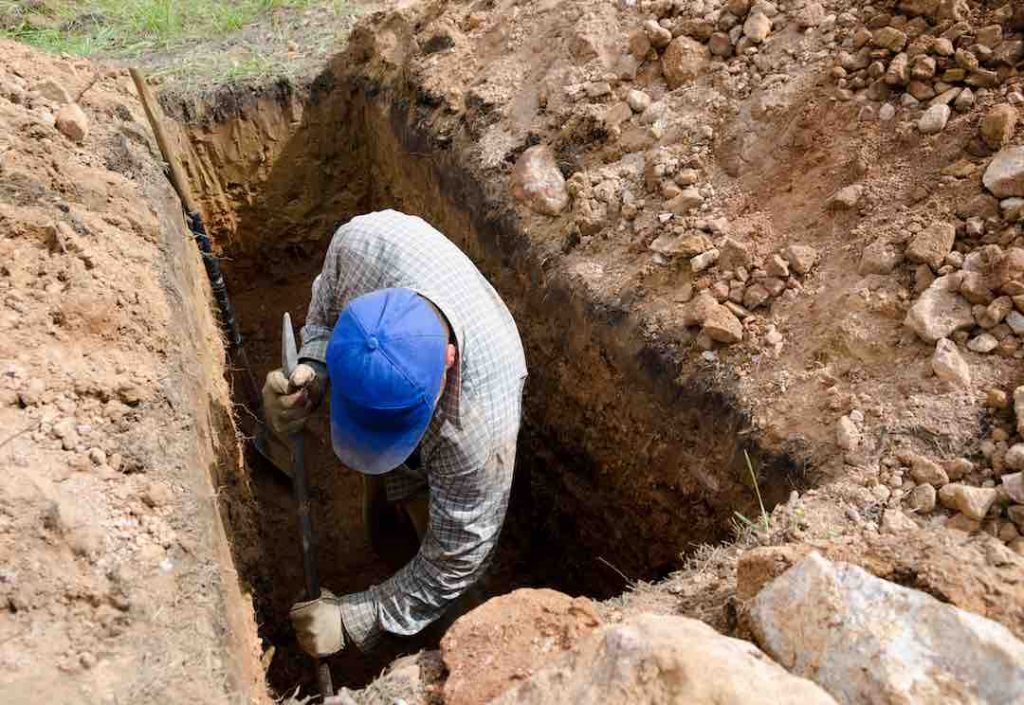
Fortunately, the Green Burial Council (GBC) is a group that educates, advocates and helps organizations and individuals understand the environmental, societal and economic benefits of green burial. GBC was established in 2005, in partnership with the traditional funeral industry. They make sure by certifying land to be eligible for a green burial, advocating for green services and products that help to minimize the environmental impact, and also overseeing that no embalming fluid be used or other carcinogen chemical formaldehyde, which has proven to pose health risks. They have created legally enforceable mechanisms to ensure to the public that burial grounds would always further the ecological and aesthetic promises that their operators made, holding them to adhering to the high standards and requirements of green and natural burials.
Headstones
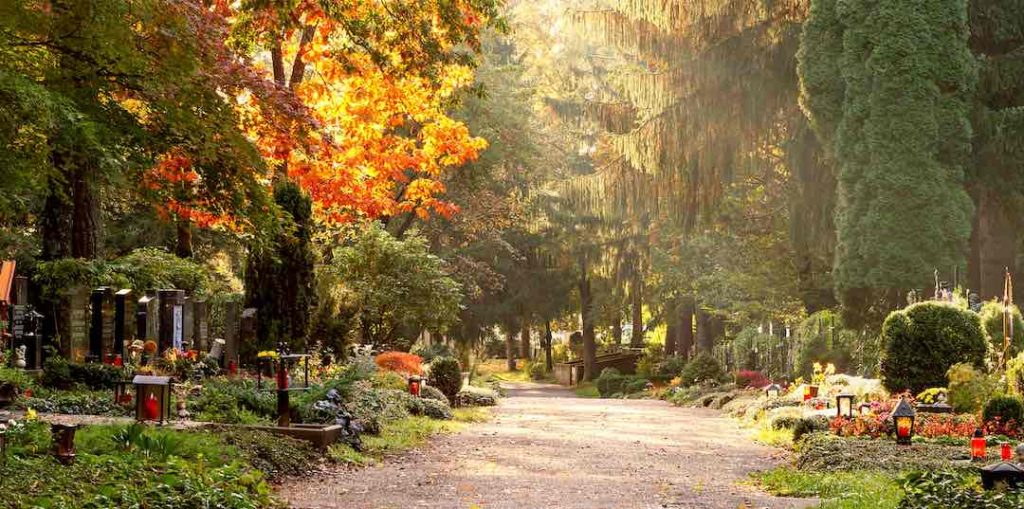
While headstones are used for natural burials, they are quite different than a traditional burial headstone. Natural burial headstones are usually a simple stone with a simple bronze plaque. Natural burials allow you to grow flowers and other plants directly on the gravesite. Traditional burial headstones are often made of granite, marble, sandstone and even slate, among other kinds of stone. They are usually laid flat on top of the grave in a cemetery to assure the plots stay even for easy manicuring.
Are Green/Natural Burials a Trend or Here to Stay?
I am happy to say that the tradition of burying the dead directly into the ground looks like it is here to stay and growing. More and more people are becoming environmentally conscious and taking part in conservation burials. That’s because the land is restored to its natural condition and protected forever, along with the land becoming hallowed, leaving an environment-friendly consciousness for future generations.
A 2017 study conducted by the National Funeral Directors Association (NFDA) found that families want new, unique ways to honor and celebrate the lives of their loved ones. This shows that green funerals are gaining in popularity. Green funerals reduce funeral costs (as embalming, vaults and coffins can be quite expensive with the national median cost upwards of $8,500. They also reduce the carbon footprint, maintaining and protecting the natural habitat by eliminating concrete vaults and forgoing embalming, and save the environment. How “green” one wants to go is up to the individual. The service can be as simple as wrapping the deceased in a cotton/silk shroud before lowering them into the ground.
Traditions and Circumstances for Green and Natural Burials
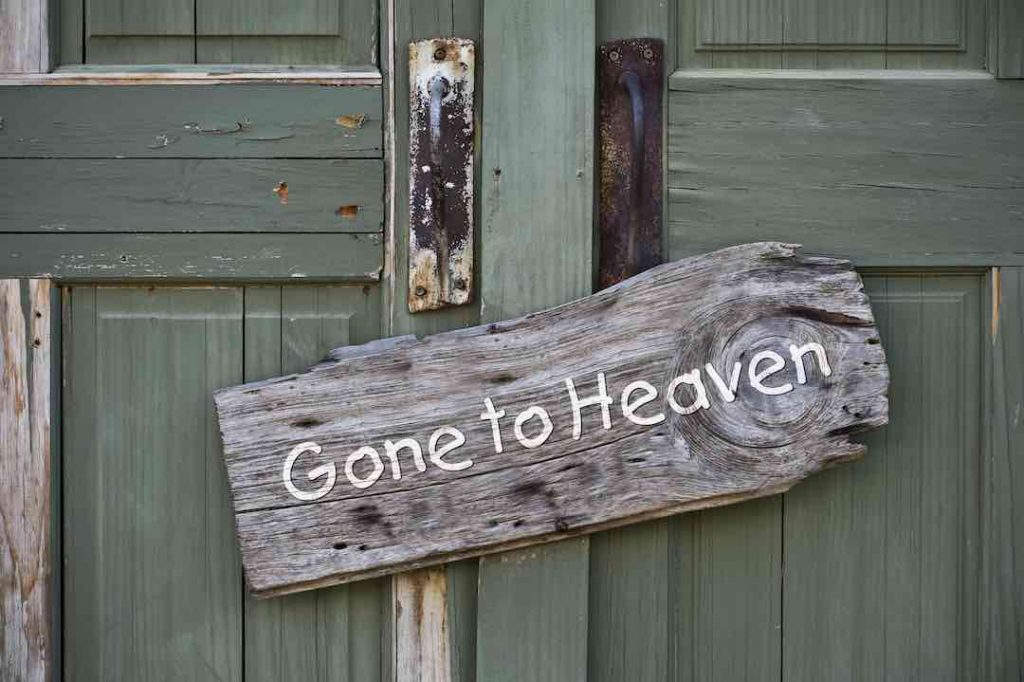
I was fascinated with how people have been naturally burying their loved ones differently across the world. These vary depending on their philosophy, religion and beliefs about one’s body, mind, spirit and afterlife. Here are a few examples of how green and natural burials have been incorporated into cultures and traditions throughout time. Definitely, some new concepts to think about.
Natural Cave Burials
 The body of a Neanderthal man was found in the Shanidar cave in northern Ira. He was buried directly in the earth with flowers left on the grave. In ancient time, Israelites and Judahites interred their dead in “family caves” located outside the settlement. As Abraham buried his wife Sarah in the Cave of Machpelah in the field of Mamre. It was where they waited for the skin to dissolve and removed the bones for reburial, being placed in an ossuary or bone box, in anticipation of the resurrection of the dead. The desire among Jews to return a dead body to the earth is probably based on Genesis 3:19 where God informs Adam that he shall return to dust.
The body of a Neanderthal man was found in the Shanidar cave in northern Ira. He was buried directly in the earth with flowers left on the grave. In ancient time, Israelites and Judahites interred their dead in “family caves” located outside the settlement. As Abraham buried his wife Sarah in the Cave of Machpelah in the field of Mamre. It was where they waited for the skin to dissolve and removed the bones for reburial, being placed in an ossuary or bone box, in anticipation of the resurrection of the dead. The desire among Jews to return a dead body to the earth is probably based on Genesis 3:19 where God informs Adam that he shall return to dust.
Natural Burials on the Side of Cliffs
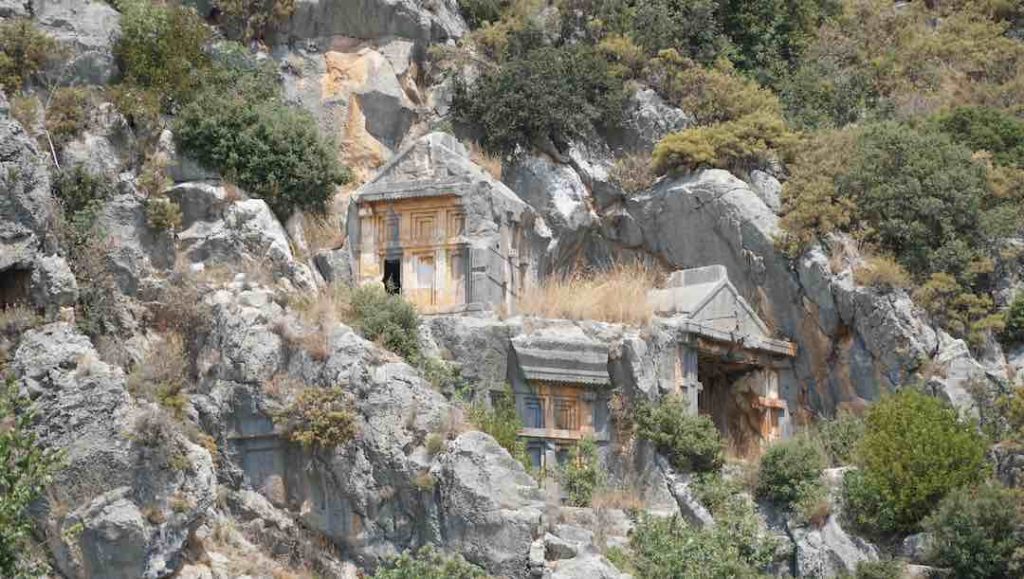
The Bo ethnic group of China hung their coffins on the side of the Three Gorges area. This was based on their belief that the higher they were, the more propitious for the dead being closer to heaven. Not to mention it saved precious land for agriculture.
Sky Burials
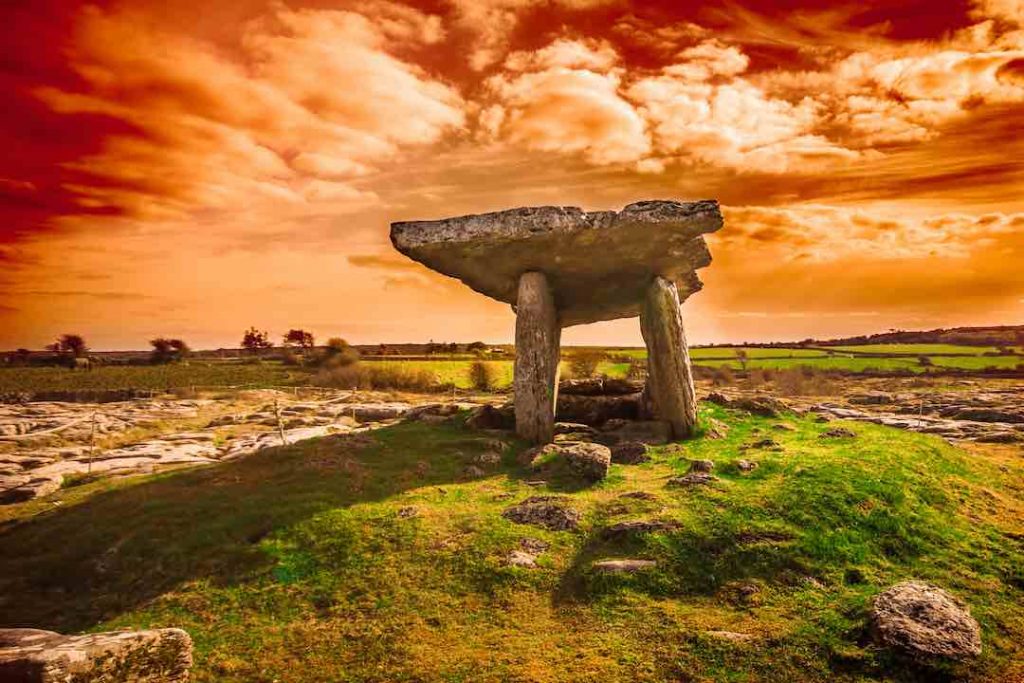
In some parts of Tibet and Mongolia, a person’s remains are fed to vultures and other meat-eating birds. This burial is known as “Sky Burials”. The body is placed on a mountaintop to decompose, while exposed to the elements, or to be eaten by scavenging animals, especially carrion birds. For the people there believed that there is no need to preserve the body because it is now only an empty vessel. Possible influences on how different cultures determine how and where their community of people are buried are due to the environment. Because in this case, the ground was too hard and rocky to dig a grave. Also, because fuel and timber were scarce, sky burials were typically more practical than the traditional Buddhist practice of cremation. They also see sky burials as being good to the environment as well as good karma in Buddhism.
Burial Tree/Scaffold
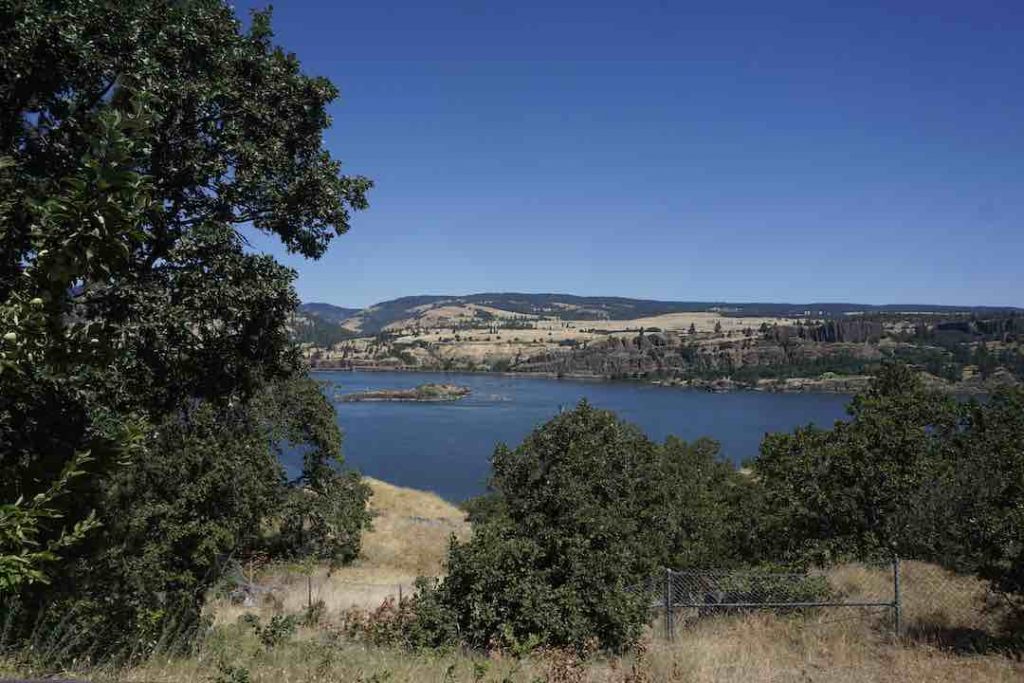
Native Americans use a burial tree as the last resting place for a dead relative. This is either as the general rule or as an alternative to a grave. They wrap the body in a robe or blankets and place it in a fork of the tree or tied to a heavy branch. A burial scaffold is also made of four upright 6-8 feet poles or branches above the ground. It’s where the body is laid to rest, out of reach of wolves, preferably located on a hill. Relatives would often place some of the belongings of the dead on the platform or around the scaffold. Placing the dead body in this way was also practical, as often the ground was frozen.
Natural Burials at Sea
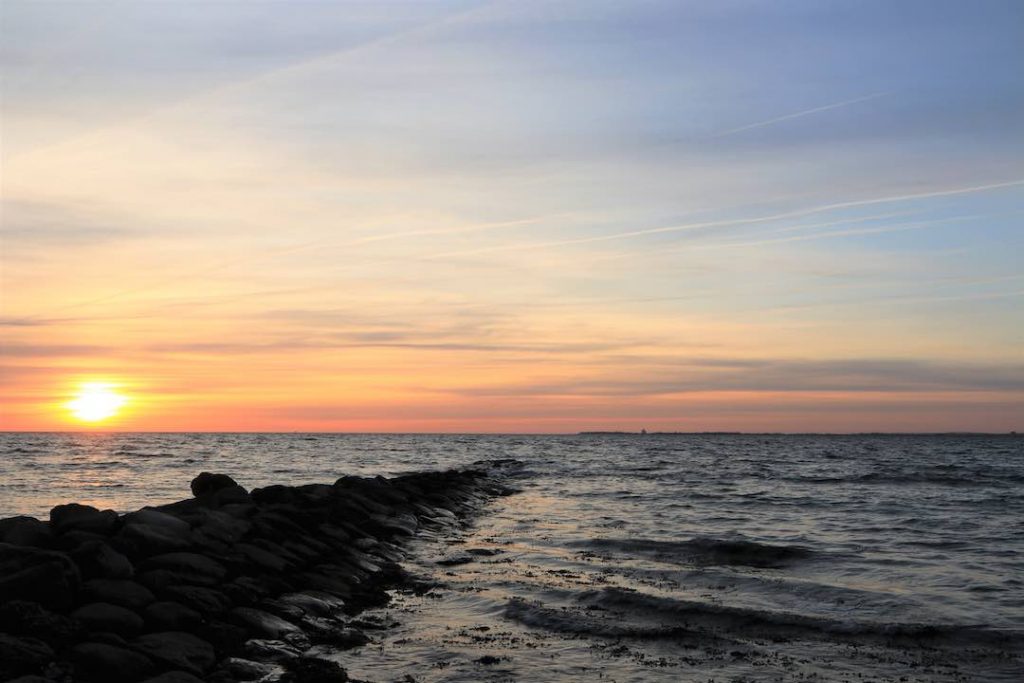
Burial at sea is the disposal of human remains in the ocean, normally from a ship or a boat. You’ve seen naval staff regularly perform it and even private citizens in many countries can do it. Throughout history, many travelers from all over the world have been buried at sea. It was common practice for sea dwellers. Services are conducted with many different customs depending on the particular tradition, either by ship or by aircraft. Usually, either the captain of the ship or religious representative performs the ceremony. The body is wrapped in a weighted shroud, made of sailcloth sewn up by the sailmaker. The sailmaker makes sure the weight is heavy and strong enough to sink to the bottom. The shroud could be in a biodegradable casket.
Burial at sea is seen as a natural burial if done in a way that benefits the environment without formaldehyde. Some organizations specialize in natural burials at sea (in a shroud) allowing the body to decompose or be consumed by animals. My friend, Olivia Bareham, founder of Sacred Crossings, The Institute for Conscious Dying and Family-Directed Funerals, recently buried one of her clients at sea. She said it was extremely moving. She watched how the captain took great care wrapping the body with meticulous intention in his knot-tying ritual.
Coral Reef Burials
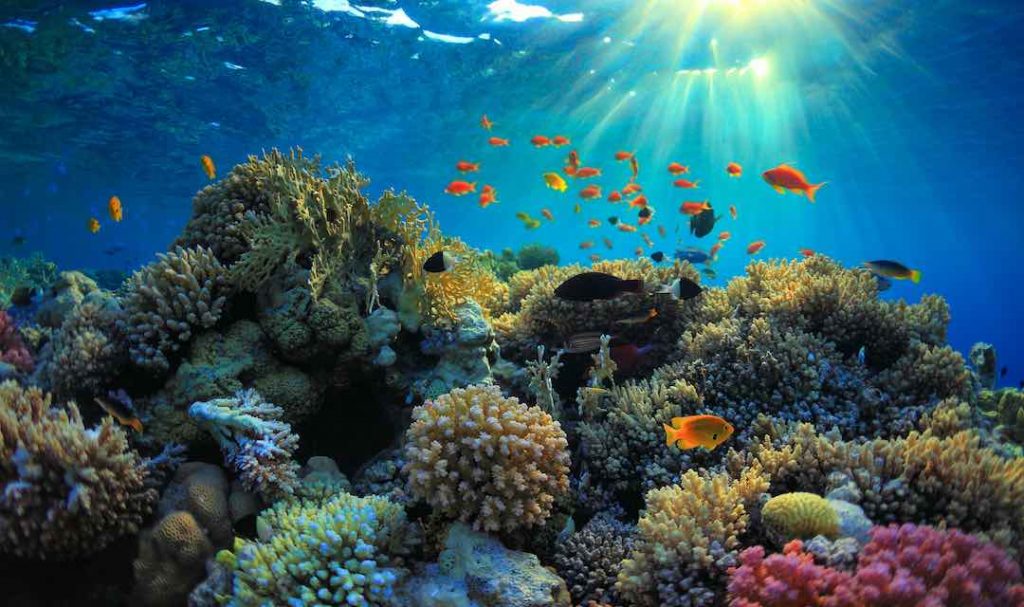
If you do decide to be traditionally cremated or resomated, you could become a reef. By mixing your ashes with concrete and placed inside concrete coral reef balls, you are ceremoniously placed in the sea as part of a reef ecosystem. These balls are used to repair damage to coral reefs, and to provide new habitat for fish and other sea life.
Home Burials
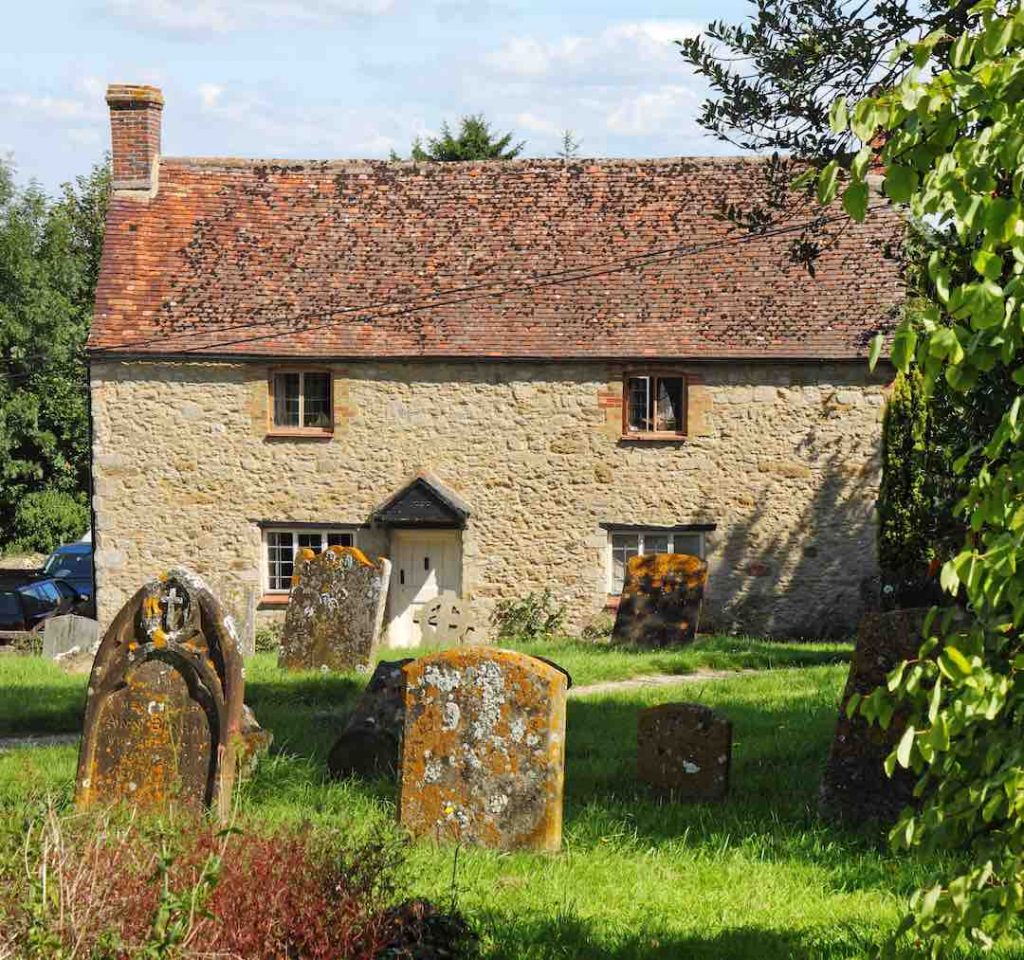
A home burial is an alternative to disposition in a cemetery. Almost all states and counties allowed it. But it requires filing a plat map with the planning department, depending on how many acres you have. Concrete and metal vaults are also excluded. It is also a requirement that caskets, urns, shrouds are all made from non-toxic and readily biodegradable materials. Olivia Bareham creates the most beautiful and sacred experiences at www.SacredCrossings.com. Thank you always for your conscious care.
Freeze-drying
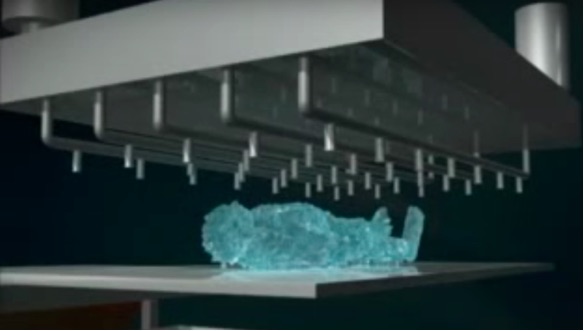
Courtesy: YouTube
Something new has come into the marketplace, called “promession”. The process, in essence, is freeze-drying the dead, then immersing the corpse into liquid nitrogen, which makes it very brittle. Then the body is vibrated to shake the body apart and the water is evaporated away in a special vacuum chamber. This chamber has a separator that filters out any mercury fillings or surgical implants. The powdered remains are then laid to rest in a shallow grave. Because the grave is shallow, oxygen and water mix with the powdered remains and turns it into a compost. That makes sense!
Burial Pods

A new option that has arisen over the last decade is the Italian Capsula Mundi egg shape burial pod. The pod is made of biodegradable material, which is basically a way to let a body become a tree. It offers two varieties: a small pod that holds cremated ashes and a larger pod that holds a body in a fetal position. After the remains are inside the pod, it is planted into the earth like a seed. Then, a tree, which the deceased had chosen before they die, is planted above the pod.
Is Cremation Considered for a Green Burial?
According to the National Funeral Directors Association (NFDA), and the GBC, cremation is not considered green because cremation can potentially emit harmful substances, such as mercury into the atmosphere. But one’s ashes can be buried in some green cemeteries. Cremation also burns fossil fuels, a non-renewable resource. Some argue that cremation may even impede the body’s natural decomposition, preventing the natural ecosystem from benefiting from it.
Alkaline Hydrolysis: An Alternative to Traditional Cremation

An alternative to traditional cremation, or burial, is a chemical process known as Alkaline Hydrolysis (AH), (also known as resomation, bio cremation, flameless cremation, or water cremation). AH uses a solution of water, an alkali solution (potassium hydroxide or sodium hydroxide), pressure and heat to speed up the body’s decomposition. The process reduces the body to components of liquid and bone. This results in a substance similar to cremated ashes. It can then be scattered, buried or disposed of in any way cremated ashes are handled.
Alkaline hydrolysis supporters argue that it’s the most environmentally friendly method of body disposition. It has the potential of saving millions of tons of wood, metal, and concrete, along with hundreds of thousands of gallons of embalming chemicals, toxic drugs, and mercury emissions, using much less energy than traditional cremation facilities. Those who oppose AH argue that it is not a dignified way of treating human remains, and it isn’t inexpensive. It possibly costs about $2,400. In comparison, the cost of cremation (without an on-site ceremony) runs between $800 to $4,300, depending on the provider.
Brief History and Myths About Embalming
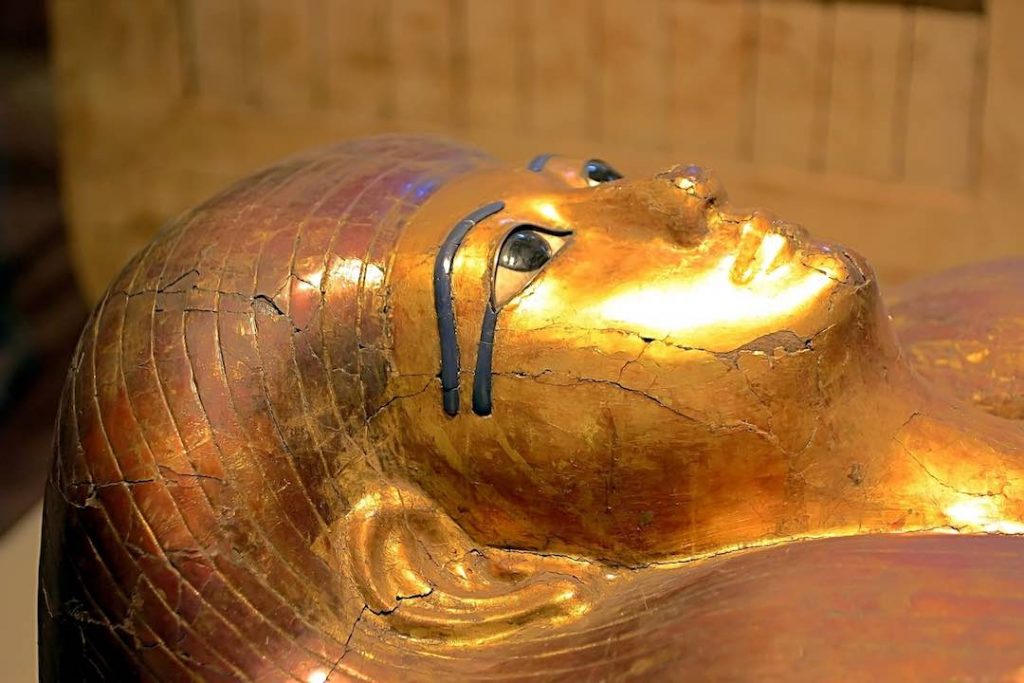
Embalming began with the Egyptians during the period from 6000 BC to 600 AD. It was around this time that approximately 400,000,000 bodies were mummified for both religious and sanitation reasons. Egyptians were known to be the first people to believe in the immortality of the soul. They believe that as long as the body remained intact, the soul would never forsake the body. So the soul could return to it after the 3,000-year journey the soul was required to make before it could return to the body. The other reason was to provide a solution to the unsanitary conditions that caused more deaths.
The practice of embalming became even more widespread with other cultures, practicing embalming throughout the ages. Modern embalming got its start during the Civil War period. Eventually, embalming became a norm with undertakers. They charge customers to keep the bodies preserved long enough for the funeral, using arsenic solutions, then formaldehyde. The modern method of embalming is defined as the disinfection, preservation and restoration of the dead human body. Today, the embalming procedure is seldom necessary. Embalming is now done mostly to facilitate funeral services where the casket is open to the public. It is also done when preservation of the body is required when shipping by common carriers.
What are Green Burial Cemeteries/Grounds?
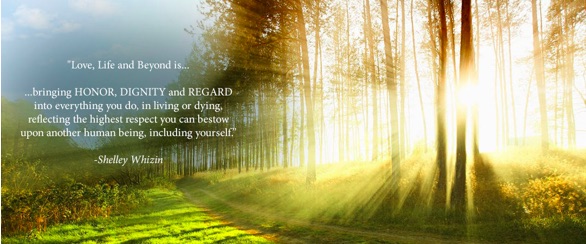
Green burial cemeteries are the opposite of the modern western-world traditional burial practices. In our traditional cemeteries, we send our loved ones off with synthetic preservatives encased in an impenetrable coffin and concrete vault. This is meant to defy the natural forces of decomposition. And in the process, we give over thousands of acres of land every year to new cemetery grounds from coast to coast. This is not to mention the millions and millions of board feet of casket wood, thousands of tons of steel and millions of tons of concrete for burial vaults, along with hundreds of thousands of gallons of embalming fluid, we spoke of above.
How They Started
The green and natural burial movement started in 1998 with the opening of the all-natural cemetery, Ramsey Creek Preserve in Westminster, South Carolina. Today, there are at least 50 natural cemeteries in the country. More and more regular cemeteries are marking off sections for natural graves. I just learned that Hillside Memorial in Los Angeles has an area sectioned off, called Gan Eden, where one can be buried there naturally. (I’m definitely considering that for me!)
Green burial cemeteries are popping up all around the country because they are environmentally friendly and comforting, returning life back to nature in a natural way. Some green burial cemeteries even allow you to grow flowers and other plants directly on the gravesite. Depending on your final resting place, there may be different rules and regulations for a natural burial. In these cases, consult the cemetery you are interested in directly to learn about the rules in your state.
There are currently 93 registered green burial cemeteries and memorial woodlands in the United States. These are recognized and certified natural burial sites by the GBC. Although some are hybrid cemeteries where both natural and traditional burials take place. These green burial sites are typically wildlife conservation areas or natural woodland areas. As stated above, a green burial site allows the use of natural resources only for burying the dead. Thse include linen, bamboo, or wood. And as mentioned, green burial sites do not allow embalming nor permit ornate grave markers. Instead, they often use a natural stone marker or GIS (Geographical Information System) technology to identify gravesite locations. In some sites, an endemic shrub or tree may even be planted onto the gravesite.
Green Burial Grounds Classifications
Green burial grounds are characterized by the degree to which they conserve natural resources and preserve the environment, among other specific standards set forth by the Green Burial Council. The GBC has developed a high standard rating system for green burial grounds, dividing it into three categories:
Hybrid Burial Ground
Hybrid burial ground is a conventional cemetery that allows for burial without an outer burial container (burial vault or grave liner) and allows for burial in any type of container, including a shroud.
Natural Burial Ground
Natural Burial Ground is a setting that prohibits outer burial containers (burial vaults and grave liners), prohibits the burial of bodies who are embalmed with toxic chemicals and prohibits burial containers made of anything other than natural or plant-derived materials, which are also pesticide free, using natural and environmental practices that maintain the natural ecology and landscape, rather than using chemicals that may harm the ecology and the landscape.
Conservation Burial Ground
Conservation Burial Ground has the strictest standards of the three burial grounds, guaranteeing long-term stewardship. It is owned or operated in conjunction with a government agency or a nonprofit conservation organization that the Internal Revenue Service recognizes as a public charity and in business for at least five years.
I met a woman from Columbia who told me that because the mafia runs the funeral industry, they can only rent a place for their loved one for a particular amount of years. Then if they don’t renew, the body is removed and put into mass graves, not guaranteeing that the body will be there forever. When you choose to be buried in a natural cemetery in a natural setting, there is no question that you need to remove the body, since it has now become part of the earth.
The Mount of Olives Cemetery in Israel is one of the most ancient natural burial cemeteries. Hundreds of thousands of burials have been buried there for over 3,000 years. The body is lowered directly into the ground wrapped in a shroud, without a coffin, with the exception of Israeli soldiers who are also wrapped in a shroud but may be buried inside a simple wooden casket. In the other parts of the world, modern Jews bury their loved ones in traditional cemeteries. The dead are either wrapped in a shroud or clothing, placed in a plain wooden coffin without nails or metal. However, many are still buried within a concrete vault.
Hybrid Cemeteries
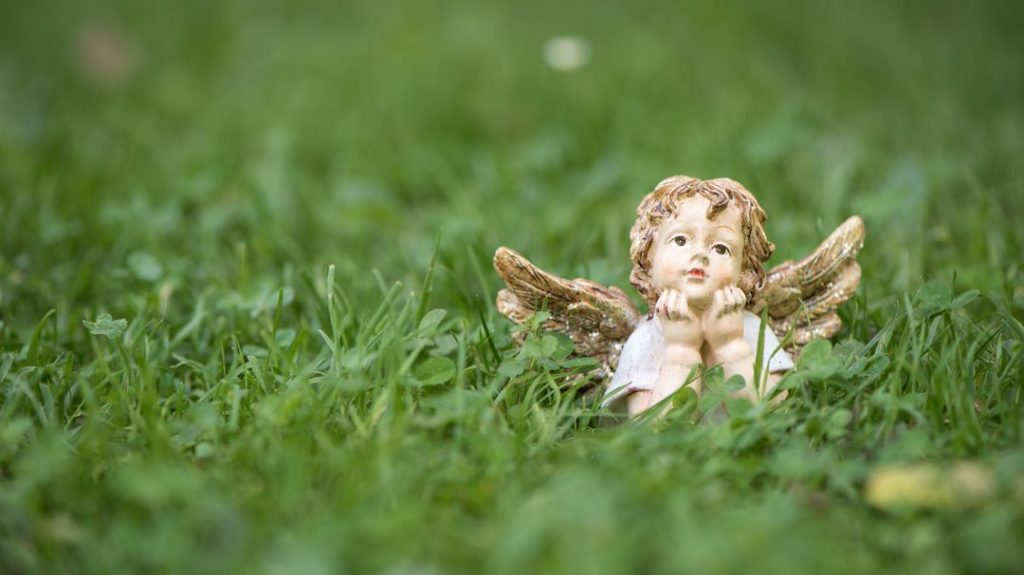
In Southern California, there are three cemeteries that the Green Burial Council has certified as a “Hybrid Cemetery”. The GBC is the leading accreditation agency in the green burial movement. And as a Hybrid Cemetery, they are able to offer families the choice of green or traditional burials.
- Joshua Tree Memorial Park is located near the Joshua Tree National Park. It has a small section set aside from its conventional cemetery to accommodate green burial.
- Woodlawn Cemetery in Santa Monica is a naturalistic wildflower meadow garden designed to emphasize the sanctity of life and harmony with nature. It features a diverse mix of grasses and wildflowers native to California that displays a natural cycle of flowering, degeneration and re-seeding throughout the year.
- Hillside Memorial Park & Mortuary in Los Angeles is a Jewish cemetery following the traditional Jewish burial rituals that have been “green” for thousands of years. The rituals are performed without a casket, symbolizing the return to the earth and the dust from which we were created. They also honor the natural process intended for our bodies to be reunited with the earth. The key difference between “Gan Eden” and the rest of the park is that burials are performed in biodegradable caskets or shrouds with no concrete vaults or liners placed in the interment space.
A list of other green burial grounds can be found on US Funerals Online at:
Natural Burial Products
In terms of different burial products, such as coffins, caskets, headstones, burial flowers, shrouds, memorial benches and urns, there are slight differences compared to more traditional burial options.
Shroud
A shroud usually refers to an item, such as a cloth that covers or protects some other object. But the term is most often used in reference to a burial sheet or mound shroud, grave clothes, winding-cloths or winding-sheet. Traditionally, shrouds are made of white cotton, wool, linen or silk, all natural fibres. In the Jewish tradition, intermixing more than one fiber is not allowed.
Coffins
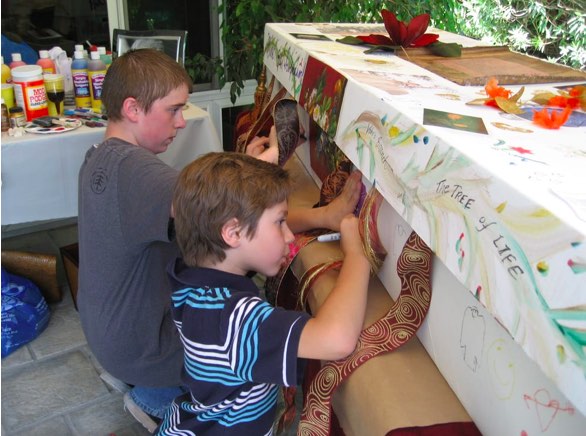
Natural coffins are made from materials that are easily biodegradable, renewed or recycled back into nature and require less energy for when being made. Other coffins (tapered-shoulder shape) and caskets (rectangular) are made from a variety of materials. Most of them are not biodegradable, are made from stamped steel, particle board (chipboard), fiberglass and alternative materials. Most traditional caskets are made from chipboard covered in a thin veneer with handles usually made from plastic, designed to look like brass. Chipboard requires glue to stick the wood particles together and some glues used contain formaldehyde, causing pollution when they are burned during cremation or when degrading in the ground. Some caskets and coffins are often manufactured using exotic and even endangered species of wood and are designed to prevent decomposition.
While there are generally no restrictions on the type of coffin used, most sites encourage the use of environmentally friendly coffins made from materials like cane, bamboo, wicker or fiberboard. When Sacred Crossings conducts a home funeral and the body is kept at the home for a 3-day vigil, Olivia brings a coffin made from fiberboard, paints it white, brings markers and paints and has everyone decorate it before the loved one is placed in it at the end of the vigil, ready for cremation or natural burial.
Blooming Biodegradable Urns
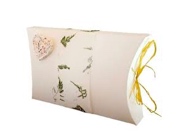 Do you remember years ago when pounded paper was a big hit with flowers embedded inside? I learned about another product that my friend just purchased for her mom, and it’s called a “Blooming Biodegradable Urn”. For earth conscious people who are nature lovers, this is the perfect product. This is such a simple, yet elegant way to bury or scatter cremated remains and are made in the United States. It is made from biodegradable natural fiber with seed paper ornaments that you can tape right onto the vessel. You can get a variety of ornaments, heart, cross or seashell shape ornament, among others. It has a biodegradable bag inside to hold the ashes. When you put it into the ground and water touches it, it begins to break down and mix with the earth, allowing the seeded ornaments to begin to grow flowers. Isn’t that a lovely idea?
Do you remember years ago when pounded paper was a big hit with flowers embedded inside? I learned about another product that my friend just purchased for her mom, and it’s called a “Blooming Biodegradable Urn”. For earth conscious people who are nature lovers, this is the perfect product. This is such a simple, yet elegant way to bury or scatter cremated remains and are made in the United States. It is made from biodegradable natural fiber with seed paper ornaments that you can tape right onto the vessel. You can get a variety of ornaments, heart, cross or seashell shape ornament, among others. It has a biodegradable bag inside to hold the ashes. When you put it into the ground and water touches it, it begins to break down and mix with the earth, allowing the seeded ornaments to begin to grow flowers. Isn’t that a lovely idea?
From Ashes to Diamonds
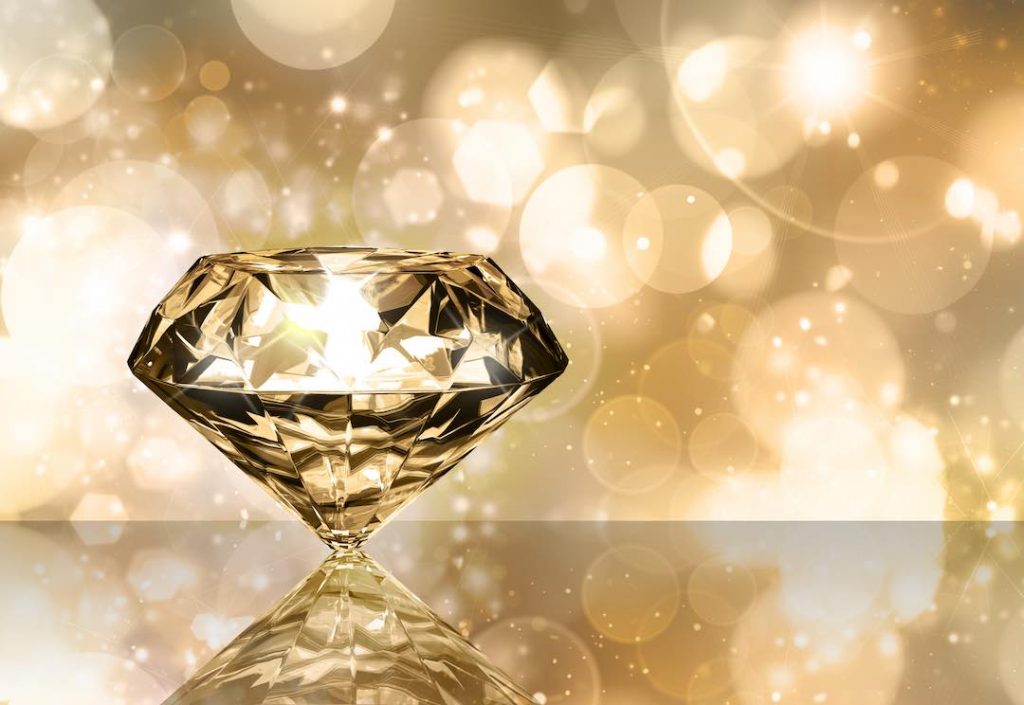
There is an option that you may have heard about, and that’s turning one’s ashes into diamonds. That’s right. Human cremation ashes can be turned into diamonds and takes between 6 to 9 months to make. Because the body contains 18% carbon, loved ones’ ashes or hair can be graded the same to natural diamonds. Cremation diamonds are made of 200 g (8 oz) cremation ashes or 10g human hair (o.4 oz) by using a HPHT (High Pressure High Temperature technology).
This technology was developed in the middle 1950’s. Since then, various research laboratories specializing in diamond synthesis around the world have been modifying it. The technology recreates the actual geological conditions that occur 150 km deep in the Earth’s core. It has a unique and powerful combination of extreme pressure (up to 60,000 atmospheres) and very high temperature (up to 2,500 degrees Celsius). These are natural conditions for diamond formation. These cremation diamonds are also known as “memorial diamonds”. They are GIA (Gemology Institute of America) and IGI (International Gemological Institute) certified diamonds out of ashes. So, if you are thinking of having the keepsake of your life, think about having your life made into a diamond.
Some Misconceptions and Corrections
Misconception: Embalming fluid is a legal requirement.
Correction: There are no laws that say one must be embalmed. Embalming fluid is used to preserve the look of the deceased and often used for viewing purposes only.
Misconception: Without embalming, fluid animals will disturb the gravesite.
Correction: In a natural burial, animals will not disturb the gravesite, because the bodies are buried at a depth deep enough as to not attract animals.
Misconception: Cremation is not an option with a natural burial.
Correction: Cremation is an option with a natural burial depending on the burial site. Check with your funeral director.
Misconception: Natural burials are not legal.
Correction: Natural burials are legal in all 50 states, but regulations differ. Check with your funeral director.
Misconception: Concrete/steel vaults are a legal requirement.
Correction: Concrete vaults are not legally required in a cemetery but are used to make sure the earth doesn’t sink to keep the cemetery plots uniform. In green cemeteries, concrete vaults are not used.
Misconception: The cost of a natural burial is less expensive than a traditional burial.
Correction: The cost of a natural burial is not necessarily less expensive than a traditional burial. A hand-dug grave is more expensive than a machine-dug grave, but the lack of a burial vault and embalming usually evens out the price.
Conclusion
We’ve covered a lot of ground, so to speak, and have given you a lot to think about when it comes to burials. I know talking about burials may not be the most popular topic. But it certainly is an important one to contemplate while you are living your life. Thinking about what happens to your body after you die helps you feel that sense of completion. It also helps your loved ones know what you want, alleviating their heartache of choosing for you. It’s hard enough to lose you, let alone figure out what you might want. Helping them by bringing your life full circle is a gift.
I wish we would talk about life and death in a more natural way, so that we can live life with more of a sense of peace. Leonardo da Vinci said, “While I thought I was learning how to live, I have been learning how to die.” This pertains to how our bodies are treated after we die as well. Why not take it to the ultimate completion? After all, this decision is yours to make, and staying conscious of what YOU want is crucial in living a full life… all the way to the end and beyond.
It’s your life. Enjoy the journey. And remember to bring love into everything you do.

References:
1https://en.wikipedia.org/wiki/Burial
2http://greenburialcouncil.org/home/what-is-green-burial
3https://www.everplans.com/articles/important-facts-to-know-about-green-burials
4https://www.everplans.com/articles/jewish-funeral-traditions
5https://funerals.org/?consumers=green-burial
6https://en.wikipedia.org/wiki/Burial
7https://greenburialcouncil.org
8https://www.nytimes.com/2018/03/22/smarter-living/green-funeral-burial-environment.html
9https://www.ancient-origins.net/myths-legends/why-and-how-different-cultures-bury-dead-001717
10https://www.haaretz.com/jewish/.premium-the-history-of-jewish-burial-rites-1.5353617
11https://www.ancient-origins.net/myths-legends/why-and-how-different-cultures-bury-dead-001717
12https://en.wikipedia.org/wiki/Sky_burial
13https://en.wikipedia.org/wiki/Burial_tree
14https://en.wikipedia.org/wiki/Burial_at_sea
15http://sacredcrossings.com/
16https://www.livescience.com/15980-death-8-burial-alternatives.html
17https://greenburialcouncil.org/home/what-is-green-burial/
18https://www.livescience.com/15980-death-8-burial-alternatives.html
19https://www.capsulamundi.it/en/
20www.nfda.org
21https://www.funeralbasics.org/what-is-green-burial/
22https://www.nolo.com/legal-encyclopedia/alkaline-hydrolysis-laws-your-state
23https://en.wikipedia.org/wiki/Alkaline_hydrolysis_(body_disposal)
24https://www.nolo.com/legal-encyclopedia/alkaline-hydrolysis-maine.html
25https://www.nolo.com/legal-encyclopedia/alkaline-hydrolysis-laws-your-state
26https://bartonfuneral.com/funeral-basics/history-of-embalming/
27https://www.livescience.com/15980-death-8-burial-alternatives.html
28http://www.nfda.org/news/media-center/nfda-news-releases/id/2419
29http://www.us-funerals.com/funeral-articles/directory-of-green-burial-sites-in-the-united-states.html
30https://greenburialcouncil.org/
31https://www.thestar.com/news/world/2012/12/16/jerusalems_mount_of_olives_cemetery_running_out_of_roo m.html
32http://www.avotaynu.com/books/Chapter1a.pdf
33https://www.foothillfuneralandcremation.com/what-we-do/green-burial-and-eco-friendly-options
34https://en.wikipedia.org/wiki/Shroud
35https://en.wikipedia.org/wiki/Coffin
36https://en.wikipedia.org/wiki/Corrugated_fiberboard
37http://www.kap-lind.com/bio-scattering-vessel.html
38http://www.suncrestdiamonds.com/education/why_is_hpht_a_superior_process
39https://en.wikipedia.org/wiki/Gemological_Institute_of_America
40http://www.igiworldwide.com/diamond.html
41https://www.burialplanning.com/burial-types/natural-burials/

